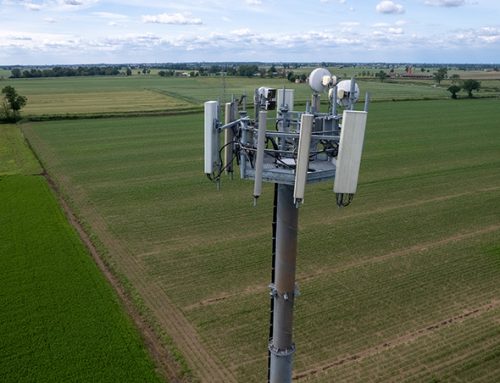Telcos and IT have been in a circular ecosystem with each strengthening the other to enable the enterprises. As Telcos pushed connectivity speeds at breakneck speed, IT has backed such initiatives with a suite of next generation technologies, such as Cloud and Virtualization, which can make the networks more agile and dynamic.
As telecommunications companies look to implement and benefit from the telco cloud, our 6-part blog series explores how telcos can navigate through challenges to implement a robust telco cloud. The series will focus on orchestration and automation, migration and management of hybrid telco cloud, balancing budget with risks, and key security imperatives necessary to mitigate risks.
This blog, the first of the series, talks about the interdependent relationship between the IT and Telecommunications sectors, highlighting how telcos have played a crucial role in powering the IT and the potential of IT to contribute back to telco infrastructure, enabled by software-driven systems and cloud-based architecture. Let’s get started.
Telcos and IT: The Circular Evolution
The IT sector, along with analytics and automation driven applications, has by far been the most critical enabler for businesses. It has emerged as a knight in shining armor by ushering in digital revolution across sectors. But as the popular African proverb says, “It takes a village to raise a child”, this knight too has had its share of villagers! A very prominent member of this village is the telco ecosystem. The telcos have also benefited from the developments in the IT sector.
IT at the Speed of Communications
Telcos have played a crucial role in ensuring reliable communication services for more than a century. They are always obsessed over the quality of telecom infrastructure and delivered high service uptime with minimum equipment failures. This sound foundation, along with rapid advancements in digital technology, has contributed to the rise of the software and IT industry, right from its inception to its exponential growth we see today.
Telco’s ability to provide reliable connectivity along with higher bandwidths requirements has been instrumental in shaping the IT industry. The distinction between accessing data locally or from remote data centers across the globe has practically disappeared. This has enabled the IT sector to develop stronger applications riding on large data sets and real-time analytics. Telcos deserve due recognition for enabling this evolution.
Enabling Telco Infrastructure: The IT Way
The current state of the IT and software world, combined with telco/digital technologies, has led to a situation where IT is now poised to contribute back to the telco world. Initially, IT focused on the top layer/application stack, but it’s now prepared to bring innovation and the power of IT to its foundation: the telco infrastructure.
This is now possible by utilizing agile software-driven intelligent systems and cloud-based architecture, which now apply to the lower layers as well. However, it’s important to note that while there are similarities, telco cloud and IT cloud differ in certain aspects. We will talk about this more in a follow up blog of this series.
Both OEM equipment players and open-source platform developers have made significant efforts to transform the previous model of fixed, localized infrastructure (that heavily relied on hardware) into remotely managed, software-driven, virtualized, and scalable server-based infrastructure.
Moreover, there’s a focus on maintaining a balance between centralized and distributed cloud-native architecture, ensuring flexibility and elasticity in scaling resources based on demand.
Next-Gen Technology Can Elevate the Telco Infrastructure
In today’s rapidly changing and technology-driven world, telcos have immense opportunities to reassess their roadmap based on the maturity of Next Generation technology. They can develop their future offerings to become fully digital service providers.
Whether it’s Fibre high-speed internet capacity or Wireless 5G, Telecom Technology has played a crucial role in bridging the gap between Work from Home (WFH) and office environments in terms of connectivity requirements for a seamless experience. Telcos have evolved from being just telephone-based service providers to become integral for communication in every aspect of life.
Each telco finds itself in a unique situation due to the layers they have built over time. Telco infrastructure today is a combination of legacy and new generation hardware, working together in an integrated manner.
It is a mix of traditional tools and modern cloud-native, mobile-integrated customer-driven software systems. The combination of telco hardware, old and new OSS/BSS stacks, geographical reach, and the customer segments they support makes each telco unique.
Despite these complexities, telcos manage to maintain the highest levels of uptime and service for their customers who rely on them for their businesses.
Upgrading Telecom Infrastructure: Virtualization, Software-Driven and Cloud-Based
Major telcos are steadily transitioning towards virtualized, software-driven, and cloud-based architecture. They are also leveraging advanced technologies like AI and ML to introduce predictability into their decision-making processes.
Such technologies allow telcos to identify and address faults before they occur, or dynamically adjust resources based on proactive detection of customer needs. In doing so, telcos can reduce the burden of timely provisioning and fixing faults, without disrupting ongoing services.
However, this transformation journey comes with its own set of challenges such as integrating legacy systems with next-generation technologies, ensuring network security, achieving interoperability, and addressing skill availability. To overcome these obstacles, Communication Service Providers (CSPs) need to develop a comprehensive roadmap for this complex transformation journey.
To harness the benefits and capabilities of AI, Cloud, and RPA technologies in the telco industry, it’s essential to build an infrastructure that supports software-based centralized control and virtualization of network functions. This transformation journey is unique and needs a blueprint that manages all stakeholders as well as visualizes the transition from legacy systems to a hybrid and ultimately fully digital ecosystem.
At the core of this telco transformation journey lies the “Telco Cloud,” that plays a vital role in running the telco digital network.
In Summary
While the telcos contributed to the rise of the IT sector, they now benefit by the adoption of virtualized, software-driven, and cloud-based architecture, leveraging technologies like AI and ML for proactive fault detection and resource adjustment.
However, challenges such as legacy system integration and skill availability must be addressed to ensure a successful transformation journey towards a fully digital telco ecosystem. We will address this in part two of the blog series, which will focus on developing a roadmap for migrating to the telco cloud.
Stay tuned for more information in the future blog of this series.
































